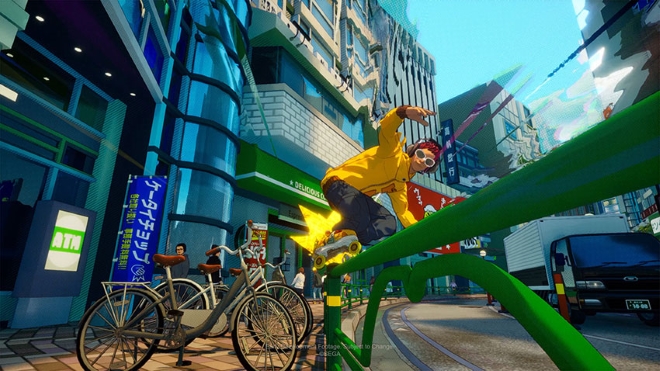Quarantine Control #193: Shadow of the Reconguista in Winter Tonight

If there’s one constant around this time of the year, it’s how quickly Christmas feels like it approaches. It always arrives about one month after Thanksgiving, but the time in between feels quicker than ever despite no mechanism being used to speed up the passage of actual time — or so we think. Anyone who carefully made all their plans well in advance of the holiday season should be fine, though this year has the added hurdle of food being more expensive than ever thanks to inflation. It’s both a joyous and frustrating time of the year, though hopefully it will be safe enough for everyone.
Geoffrey Barnes
Gundam: Reconguista in G Movie Series (2019-2022)
Source: It was on YouTube; It’s Gone Now — You’ll have to be rich and import or sail the vast seas to see them now, matey.
Episodes: 5 movies
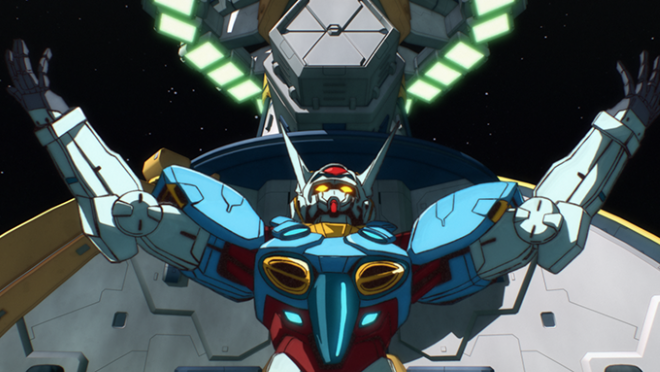
The key to enjoying the Gundam: Reconguista in G series of movies involves knowing what you’re getting into. I’m familiar enough with Yoshiyuki Tomino’s works, from his earlier shows like the original Mobile Suit Gundam and the wild trip that’s Zambot 3 to later works like Overman King Gainer. I know enough to realize that his works have been an acquired taste for a while now, something exacerbated with his later works. They all require for the viewer to intently pay attention to everything unfolding on the screen to understand the world and character motivations — and even then, that’s sometimes not enough.
Case in point: I watched the first three movies in the G-Reco series when they were first uploaded to the GundamInfo YouTube channel, and provided my thoughts on the first two in an older Quarantine Control installment. But the movies progress at such a breakneck pace and can get complicated enough (despite the series’ ostensible simplicity) that I needed to rewatch all the films this time around. It didn’t help that they were only on YouTube for a short time, about two-and-a-half weeks. The movies are indeed not always comprehensible, though the overall story has been more streamlined compared to the 26-episode TV series. But it’s tough to dislike a single part of this series when it comes with so much pure and concentrated fun. Sometimes, that’s enough to power a series.
G-Reco takes place in the year 1014 of the Correct Century, called such because it occurs 1,014 years after the end of the Universal Century. Precisely where in the timeline it takes place after works like the original Mobile Suit Gundam (UC 0079) and Mobile Suit Victory Gundam (UC 0153) is unclear, alongside whether it truly takes place before or after Turn A Gundam (which I provided my thoughts on here). It’s clear Tomino didn’t care when he just wanted to craft a good story in the same universe untethered to prior characters and events, and it ultimately doesn’t matter outside the light references to UC events. What matters is the quest of Bellri Zenam, who quickly bonds with the G-Self Gundam initially piloted by Space Pirate Aida Surugan. It’s as if Bellri is a new type of pilot.
I’m not going to lie here: I had a hell of a tough time telling which character was on which side at the series’ start. G-Reco, to no surprise, is similar to most other Gundam series in not having a true set of heroes and villains. But as I said above, it’s also one where the viewer must pay attention to every little detail. This is where the complaints about the series being too complicated came from, thanks to Tomino and the production team (heavy emphasis on the former party) wanting the viewer to figure out some matters for themselves. Several characters discuss matters regarding the state of the world, the organizations involved, and the character motivations as if they’re familiar with them, though that’s not always being the case with the viewer.
But that’s okay. The viewer will eventually figure out the purposes of the similarly-named Capital Guard and Capital Army, and how Ameria (previously in Turn A Gundam) plays into the story. It helps that the show is pure joy to watch. The character motivations don’t always make sense, and have some odd-but-memorable lines, in true Tomino fashion. (It’s still a shame that part of the most memetic one was cut from the movies.) But they’re so nicely designed and lovably goofy that I can’t hate them. The mobile suits themselves are also well designed, and there are plenty of them.
The overall story feels as if it was drafted to go as long as the older Gundam shows, with an episode count in the late 40s if not precisely at 50. The creative team could have used that extra time for character development, alongside further elaboration on the motivations of all factions and organizations involved in the story. The team needed to make compromises for the story to fit within the confines of 26 episodes; compilation movies with a total runtime close to as long as the 26-episode run didn’t offer much room for fixing. But the team did what they could with the story.
The animation is largely good, through there’s an obvious quality gap between footage reused from the TV series and animation new to the movies — especially in the first three films. This reaches its zenith when some mobile suit movement is created from someone waving an animation cell back and forth during production, a charmingly old school technique. Don’t take this as a complaint or me highlighting a flaw.
The Reconguista in G movies are good and entertaining, but it again helps to go in with the right expectations. It’s a very acquired taste. Some initial disappointment came from Tomino fans expecting a Turn-A Gundam successor, which it doesn’t come close to reaching in terms of quality. But that also wasn’t what he and the team were going for, thanks to G-Reco’s more conventional Gundam nature. But it’s a lot of fun. It’s a shame anyone outside Japan who wants to see it now will either have to import the expensive Japanese Blu-rays, or ye landlubbers will have to take to the seas if you get me drift.
Angela Moseley
Shadows of Adam (2017)
Source: Steam, Nintendo Switch
Episodes: 1 video game
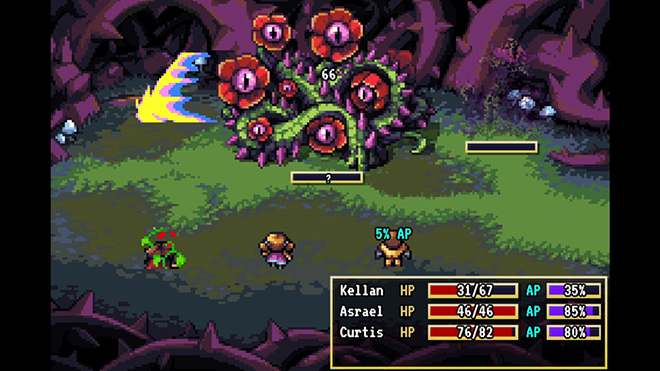
I’d like to talk a bit more about Shadows of Adam. Anyone who tuned into my final livestream of the vanilla game on December 3 saw it bleed into Monday morning. It edged out my final Shin Megami Tensei: Devil Summoner 2: Raidou Kuzunoha vs. King Abaddon livestream by over an hour and a half to become my longest stream for Damage Control Blog. I started at 8pm ET and wrapped things up just after 4am ET. Shadows of Adam isn’t a particularly lengthy game. I simply miscalculated how long it would take me to finish before I started my December livestreaming break. I just wrote about this game for my last Geek Babble, but I feel like it deserved a Quarantine Control entry as well.
Adam is a remote village nestled deep in the forest. However, its very existence is being threatened by a phenomenon known as the Tangle. Asrael, a magic user is blamed by the villagers for the Tangle. To smooth things over, Kellan the son of the missing village hero, Orazio offers to find a way to stop the dangerous plant growth. He’s joined by Asrael deep in the thicket. The two of them find a monstrous plant among the growth. Just as they prepare for battle, a large monk named Curtis joins them in the fight. Once they defeat the monster plant, they find a strange book in the middle of the Tangle. Asrael touches it, and finds it to be oddly warm. Just as she expresses how dangerous the book is, Orazio’s disembodied voice implores the young girl to help him.
Kellan and Asrael decide to find their old friend Talon, as he may know something about the book. Curtis joins them, and the trio sets off into the world. What they discover is that powerful magical forces still lurk in the world, despite magic being outlawed. Worse, powerful forces are vying to find the very artifact that nearly plunged the world into darkness a century earlier.
What really makes Shadows of Adam unique is how it pays tribute to other 16-bit RPGs while retaining its own uniqueness and modern game design sensibilities. There are no random encounters on the world map or in dungeons which makes it fun to explore. All enemies can be seen coming, but the majority of them are placed strategically. Getting around them is mostly impossible. Granted, that means avoiding battles isn’t really an option. That said, each dungeon has a set number of encounters and grinding is optional. Add that to the fact that you can save anywhere outside of battles, and this is a game that really respects your time.
The battle system is turn-based, but it has a few cool twists. First, four party members are all you have. So there’s no need to worry who to bring and who to leave behind. Second, they all play a huge role in offense and defense in each battle. For example, Kellan can buff the attack of other party members, lightly heal everyone, and lower the defense of enemies in addition to his strong physical attacks. Arsael is the primary magic user of the party and can heal and provide offensive magic. She can also erect barriers to protect other members of the party. Curtis mostly focuses on buffing himself for fights and hits the hardest, but he has a move where he can sacrifice his life to heal everyone else. Finally, Talon is balanced when it comes to offense. He provides speed buffs, has his own unique magic (some of it luck-based), and powerful physical attacks. This four-person team works well can can cover reach other’s weaknesses. No one person is stuck with a single duty. That said, it’s still possible to get your ass kicked if you go into a battle without having a good plan.
As for combat itself, I love there’s a mechanic where AP (ability points) are restored every turn. There are even moves that provide a self-buff to a character while restoring their AP at the same time. It ensures you’re not helpless if you burn through magic or ability items, and can get yourself out of a pinch during a fight. The risk is losing a turn or two, but the reward is not having drag yourself through long fights with no magic. (See my fight with the final boss in Raidou Kuzunoha vs. King Abaddon as example of a protracted fight without magic points.) AP is also slowly refreshed at the end of every turn. While it’s a system that seems overly generous on the surface at the risk of making the game too easy, it is just another part of managing a battle. Additionally, some enemies do have debuffs which can bring a character’s AP restoration ability down to 1%. Meaning, you can’t completely do away with healing items.
The game has a tightly written story. It’s not a sweeping narrative as found in some larger RPGs, but it gets the job done. Every so often it’s nice to have a short, contained story. Each main character is fleshed out, and we’re given small peeks into their past lives. The story itself has numerous twists, though astute players can probably figure out the big reveal by game’s end. I found myself invested from start to finish, though I can say I didn’t care too much for the extra story provided by the side quests. I was just there for the gear.
The only point of frustration the game provided me with are the dungeon puzzles, as I mentioned in Sunday’s article. Solving spatial puzzles aren’t my strong point, and I was mentally transported back to the time I streamed To The Moon in 2020. A huge thanks to Drew in that regard for helping me to solve these puzzles faster during the stream. After he’d gone to bed during my final stream I was on my own, but I managed. I was also annoyed to learn the final puzzle has a mechanic where it’s possible to soft lock the game because a tower can cover the needed reset switch. While I did trigger this, I had a heads-up about this flaw from TV Tropes and saved before I started the puzzle. Yes, I did have to reload that save several times. I also hit an area where the game crashed on me. It was my only crash during the 21 hours I played. That said, it was darkly amusing it happened during my marathon to finish the game.
Shadows of Adam is a game that I’m glad I didn’t sleep on. It is a short, classically-styled RPG that was enjoyable from the first hour until the credits rolled. It put Something Classic Games on my radar as indie developers and publishers. I’d recommend this indie title to anyone who enjoys turn-based RPGs.
Joseph Daniels
I think it’s time to tease some of what I’ve been trying to work on these past couple months. Next Wednesday, I’ll be posting the next Retrospective article, and it’s going to be a bit of a surprise. Here’s a screenshot from it:
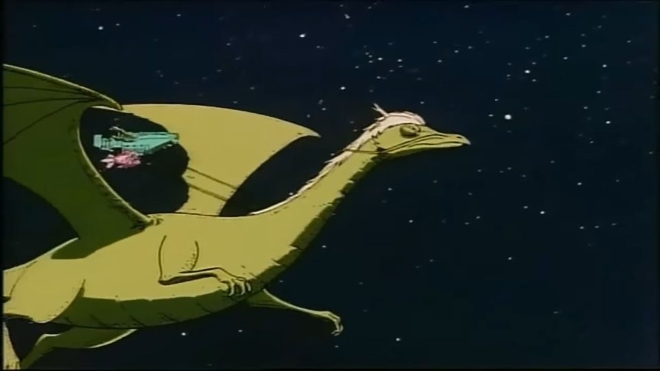
And then in January, I’ll be (hopefully) posting weekly for about a month and a half until my current crop of retrospectives are done. The next video game I’ll be talking about is Final Fantasy VI, but then after that, I have a few more surprises in store from Squaresoft’s library.
In the meantime, I’ve been meaning to get back to my Marvel rewatch project.
Marvel Cinematic Universe: Phase Two
Captain America: The Winter Soldier (2014)
Source: Disney+
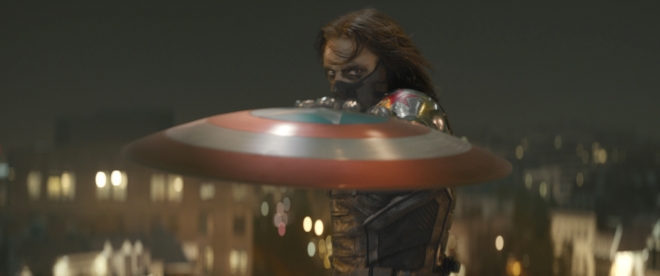
Alas, poor S.H.I.E.L.D., we didn’t know you for very long. Six years, nine films (although S.H.I.E.L.D. didn’t factor into all of them), half a season of the TV show named after you, and now you’re gone.
It’s amazing how the scene where a large number of faux police officers open fire on Nick Fury and try to kill him hits a lot different in a post Black Lives Matter world. What appears out of the ordinary for someone like me might’ve been all too familiar a worry for some of the more marginalized members of society. I can’t imagine how it must’ve felt for this sort of thing to be portrayed as incredibly out of the ordinary among a population who has to live with those sorts of fears on a daily basis. Nick makes a snide remark at a couple cops and suddenly what seems like the entire precinct are out to get him. He ultimately has to retreat underground when a hired assassin joins the fray.
The second phase of Marvel shows just how versatile they were when it comes to the kinds of movies they were able to deliver. The first Captain America was a war-time action movie with a hero who could go toe to toe with Nazis. The second movie turns into more of a James Bond style spy film, and is probably the first time that Marvel was able to introduce a new superhero as a supporting cast member and not have it feel like they’re intruding or out of place. They learned from how they tried to graft Black Widow into Iron Man 2 and then didn’t give Hawkeye much to do in Thor. Hawkeye certainly didn’t fit there and I wish they’d given him his own film.
New to the MCU in The Winter Soldier is Anthony Mackie as Sam Wilson, also known as The Falcon, a non-powered individual who comes with a special suit that helps him to keep up with the heroes of the film. They introduce him right at the start in a bit of a humourous scene where Cap is practically running rings around him during his morning exercises and the two bond over some shared experiences. At first, this seems to be just an ordinary scene of Cap being friendly, but later, when he and Black Widow have nowhere else to turn, they drop in on Sam and quickly determine that they can trust him at a time when they can’t trust anyone else.
Cap and Black Widow had been teamed up on a mission to defeat pirates aboard a S.H.I.E.L.D. vessel at sea, but he realizes that he can’t trust his fellow agents when it turns out that Black Widow was given orders independent of the mission. He confronts Nick Fury about it and it’s starting to look like Cap might not be on board with the whole S.H.I.E.L.D. thing after all, especially when he finds out about a S.H.I.E.L.D. project designed to eliminate threats before they can become threats. It’s absolutely amazing how many people who propose these kinds of methods of pre-emptively stopping crime haven’t read The Minority Report.
When Nick Fury’s life is threatened and then ultimately taken, Cap is forced to work with Black Widow and comes to trust her a lot more when he realizes they actually are on the same side. He also finds himself coming face to face with his past in a number of uncomfortable ways. It turns out that the Nazis corrupted S.H.I.E.L.D., meaning that for the second solo movie in a row (then again, in the MCU, they have a rather loose definition of “solo movie”), Cap has to fight Hydra to determine the fate of the world.
It gets worse for him, though. The assassin that took Nick Fury out is none other than his childhood friend who died in the first film. It turns out Bucky’s not dead and instead has been transformed into a super soldier not unlike Cap, then brainwashed into going along with it. In the first film, Cap stated that he doesn’t want to kill anyone, not even Nazis, but those morals are definitely being tested here because not only would he not want to kill Bucky, he doesn’t even want to fight his friend, not even when absolutely necessary.
The lyrics to an old Kenny Rogers song come to mind here. “Sometimes you gotta fight when you’re a man.” And I think deep down, Cap understands this. He does what’s absolutely necessary against his old friend, now the Winter Soldier, but even then, he goes above and beyond to try to get through to the man beneath the assassin.
Meanwhile, he, Black Widow, the Falcon and Nick Fury (he survives his death, by the way) are trying to defeat the Hydra version of S.H.I.E.L.D. and bring down the system introduced at the start of the film that finds threats before they can become threats, because the data being fed into it is data curated by Hydra to root out people who would be most likely to stand opposed to them. In all, it feels like someone looked ahead into the future and wrote a film about the most extreme version of what they saw. Instead of people enjoying a disorganized riot at the White House, Hydra is portrayed as having infiltrated so many of the authorities that we take for granted. Instead of a trio of cops that crush the throat of someone randomly, it feels like the entire police force are out to kill Nick Fury near the start of the film, and it’s almost comical just how many loyal Hydra operatives don’t care about how it looks to outside observers, they’ve stopped being subtle and are attempting to enact an armed coup of not only S.H.I.E.L.D. and Washington D.C., they want the world and they believe they have the power to do so. Who’s going to realize it’s happening in time to stop them?
It’s absolutely amazing how many people who think they can take over the world and that’ll be that, they’ll have won forever, haven’t played Final Fantasy VI. Or, you know, read about literally any revolution in history. They think they have the power to prevent these uprisings but it won’t last forever. They can invent new ways to prevent these uprisings but it’s only a matter of time before someone actually does figure out a way around them, or their supposed allies start to turn on each other, hungry for power.
What’s also interesting is that when explaining the master plan, it’s suggested that one of the targets of their new system are the educated, and that definitely tracks with differences between the voter bases of the left and the voter bases of the right. One side is decidedly more educated than the other.
There are a lot of interesting things about this film in relation to the modern day and I wish I had taken the time to take notes like I do when playing video games for my retrospective project. I probably could’ve doubled the length of this write-up. I’m just going from memory based on my most recent viewing.
I particularly liked how the Falcon is integrated into the story in a more organic manner than I thought Black Widow or Hawkeye were in their debut showings. It felt like Black Widow was existing separate from Tony Stark and didn’t actually help him directly in Iron Man 2, she was doing her own thing that just happened to align with Iron Man’s goals, and it felt like the scenes with her were taking away from the main star of the movie. And of course, I’ve already said everything you can possibly say about Hawkeye in Thor. But here, not only is Black Widow used in a far better manner, actually working with Captain America, fighting together as a team, Falcon joins the team and also feels compatible with the more established heroes of the film.
I think it’s possible that, outside of an Avengers style team-up, the writers needed to figure out how to match powers better. Iron Man might be just a man, but his suit definitely puts him in a different league than Black Widow. Having him team up with the Iron Patriot in the third film makes a lot more sense. Instead of Iron Man, Black Widow teaming up with Captain America makes a lot more sense. The Falcon may be able to fly like Iron Man, but he operates in a much more limited capacity and is shown to be able to be depowered a lot easier than Iron Man, making it look like his powers are about on par with his co-stars in the film. He doesn’t have Iron Man’s ability to tank hits as easily, and he certainly doesn’t have the money to write off suits as easily as Tony Stark does.
After this film comes The Guardians of the Galaxy, the first actual team in the MCU outside of the Avengers. It’s becoming pretty clear by this point in the movies that Marvel really likes having teams of heroes show up for each fight. It makes sense, too, since in a world where several heroes exist, there’s no reason that every time a threat appears, only one hero happens to be around. You’d be forgiven for wondering why Captain America wasn’t there to help Iron Man in Iron Man 3, of course.
This Week’s Short Film
Tonight (2023)
Hopefully you’re not having any problems with your Christmas preparations, because time doesn’t stand still. It’s also running out very quickly. Until next week, everyone.





